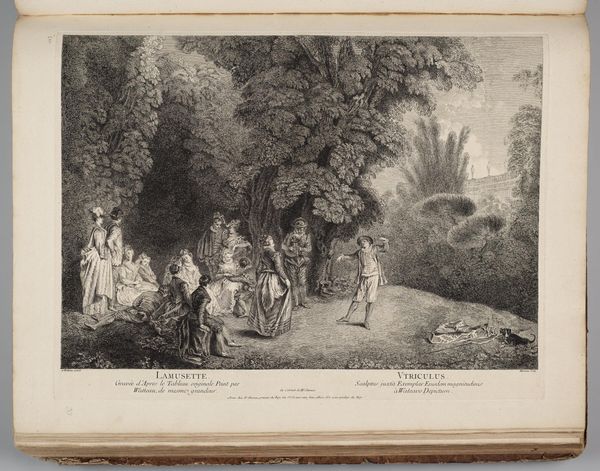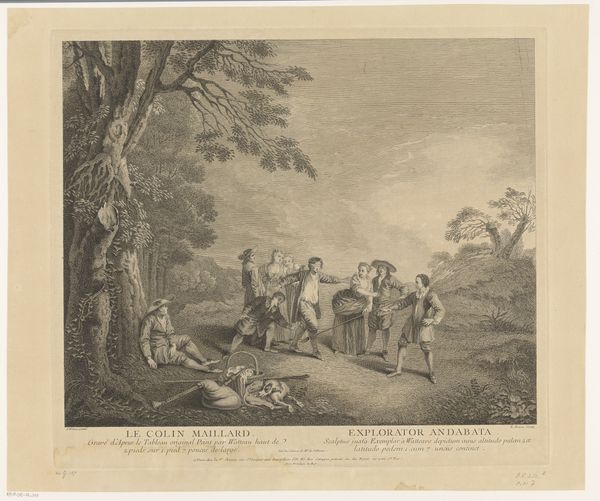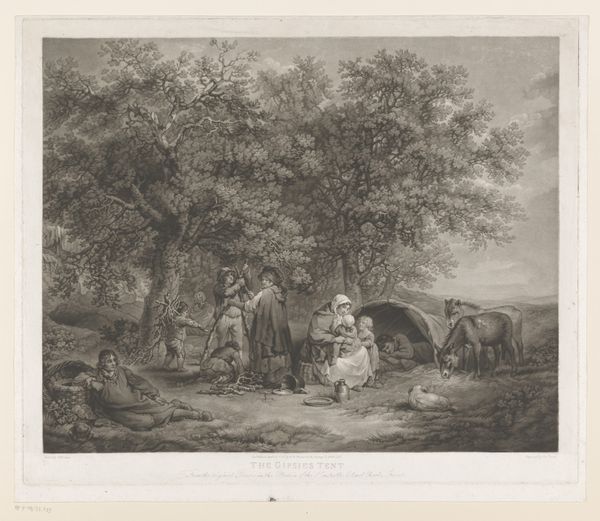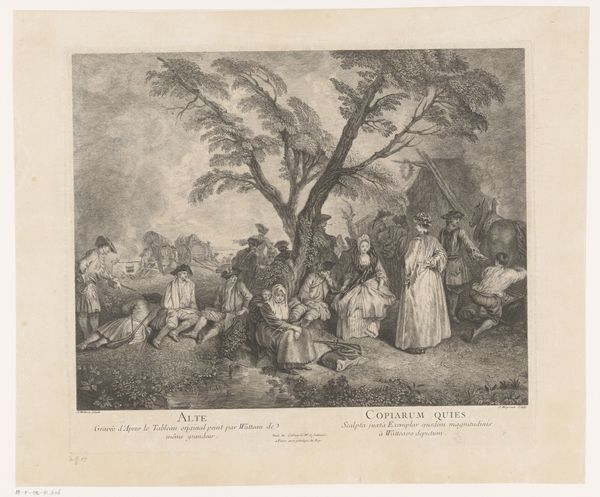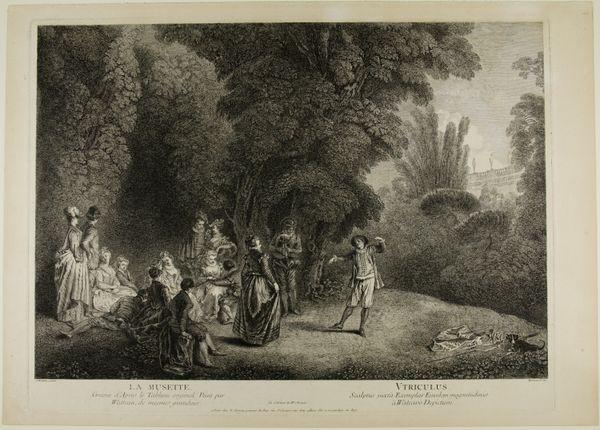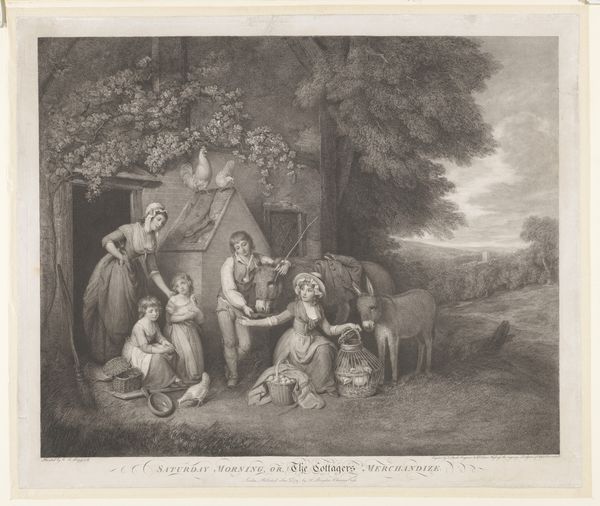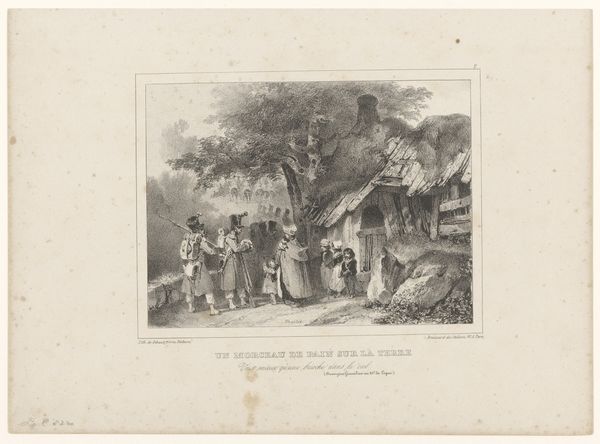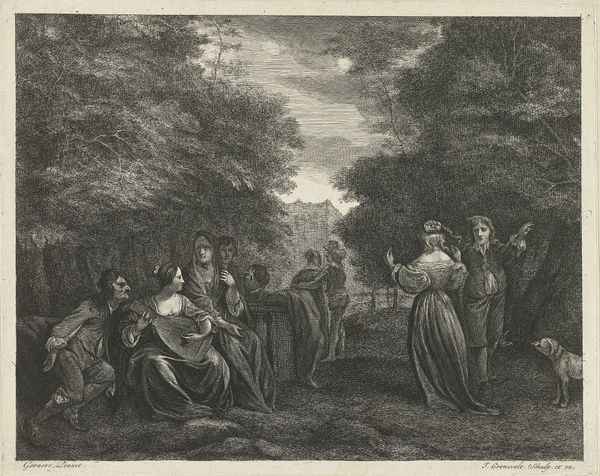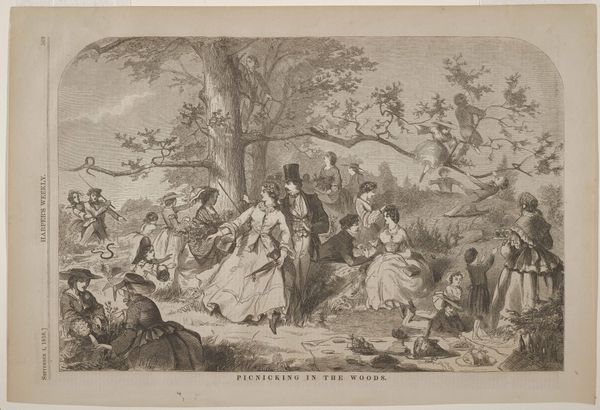
drawing, print, paper, engraving
#
drawing
# print
#
old engraving style
#
landscape
#
figuration
#
paper
#
england
#
19th century
#
genre-painting
#
engraving
Dimensions: 135 × 169 mm (image); 170 × 185 mm (plate); 330 × 260 mm (sheet)
Copyright: Public Domain
Albert Henry Payne created this engraving, Fête Champêtre, sometime in the 19th century. It captures a scene of leisure, with figures gathered in a park-like setting. Dominating the composition is a classical statue of a woman and child, reminiscent of Greco-Roman ideals of beauty and virtue. This idealized vision of pastoral life and maternal love echoes throughout art history, reappearing in Renaissance paintings and later Neoclassical sculptures. The statue is a vessel that evokes a sense of timelessness. The scene is imbued with a yearning for a Golden Age, a concept that permeates the collective unconscious. Consider how the notion of Arcadia, a utopian vision of pastoral harmony, has been revisited and reshaped across centuries. The subtle tension between the statue and the living figures creates a psychological resonance. The emotional power lies in the silent dialogue between the ideal and the real, between the enduring symbol and the fleeting moment. This image reflects a cyclical return to classical ideals, demonstrating how these forms and their meanings are continuously reinterpreted in response to changing cultural landscapes.
Comments
No comments
Be the first to comment and join the conversation on the ultimate creative platform.


